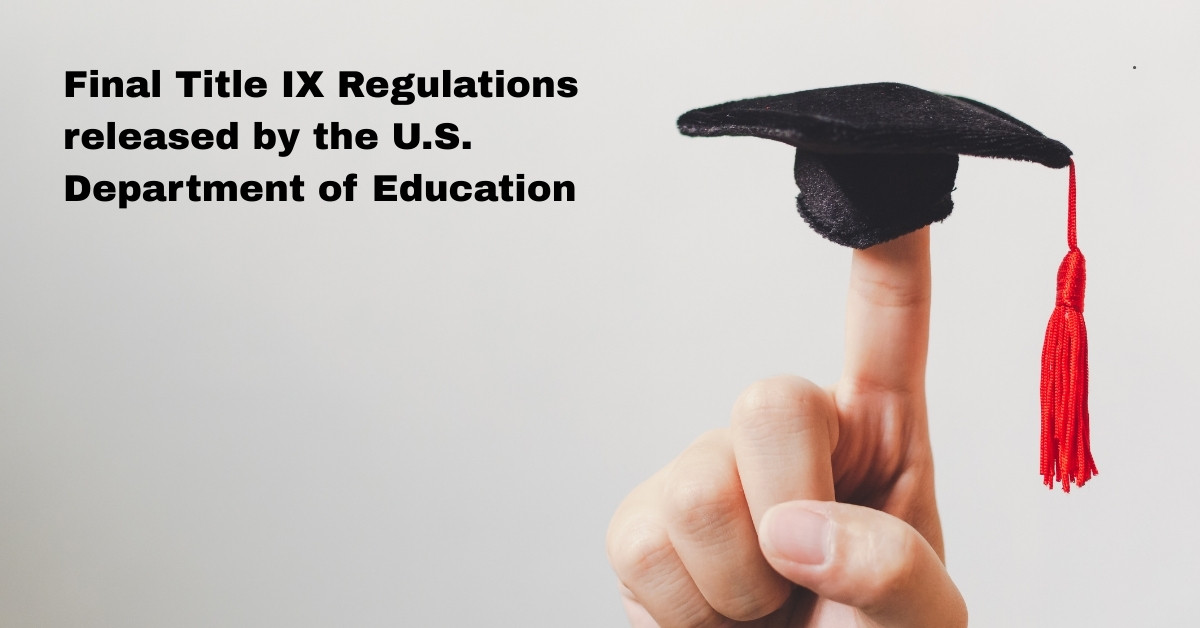For over fifty years, Title IX of the Education Amendments of 1972 has been the cornerstone of gender equity in education, prohibiting sex-based discrimination in any educational program or activity that receives federal funding. While its early years were often associated with equal opportunities in athletics, Title IX has expanded in scope, especially regarding sexual harassment and sexual violence in schools and colleges.
In 2020, the U.S. Department of Education issued a Final Rule that, for the first time in the law’s history, created a formal regulatory definition of sexual harassment under Title IX. This addition reshaped how schools investigated and addressed complaints of sexual misconduct. In 2024, a new Final Rule revised and expanded those protections yet again. To understand these changes, it’s important to see what the 2020 rule added and how it differs from today’s standards.
The 2020 Title IX Final Rule: Formalizing a Definition
Before 2020, Title IX did not have a clear definition of sexual harassment written into federal regulations. Schools relied on case law, particularly the Supreme Court’s 1999 decision in Davis v. Monroe County Board of Education, which held that schools could be liable if they were deliberately indifferent to harassment that was “so severe, pervasive, and objectively offensive” that it deprived a student of educational access.
The 2020 Final Rule, issued under then–Secretary of Education Betsy DeVos, changed this landscape by codifying a three-part regulatory definition. For the first time, Title IX formally stated that sexual harassment includes:
Also Read
Quid Pro Quo Harassment
When an employee of the school conditions an educational benefit, service, or opportunity on a student’s participation in unwelcome sexual conduct.
- Example: A professor offering higher grades in exchange for sexual favors.
Hostile Environment Harassment
Unwelcome conduct on the basis of sex that a reasonable person would determine is so severe, pervasive, and objectively offensive that it effectively denies a person equal access to the school’s program or activity.
- Example: Persistent, degrading sexual comments that disrupt a student’s ability to attend class.
Sexual Assault, Dating Violence, Domestic Violence, or Stalking
As defined in federal statutes like the Clery Act and the Violence Against Women Act (VAWA).
- This expansion meant that schools had to respond not only to harassment but also to crimes like rape, sexual assault, and stalking when they affected students or staff in an educational setting.
The formalization of the definition did two things:
- Clarity for Schools: For the first time, universities and K–12 schools had a federal regulatory framework spelling out what counts as sexual harassment under Title IX. This was meant to reduce confusion and legal risk.
- Narrowing of Scope: Critics argued that the “severe, pervasive, and objectively offensive” standard set a high bar for what qualified as harassment. For example, conduct that was “severe” but not “pervasive,” or “pervasive” but not “objectively offensive,” might fall outside Title IX—even if it harmed the victim. Survivors’ advocates worried this discouraged reporting and left some victims unprotected.
The 2020 Rule also required live hearings with cross-examination in higher education cases, a move designed to strengthen due process but criticized as intimidating for survivors.
Colleges and universities had to revise their Title IX policies significantly:
- They were obligated to investigate only when harassment occurred within the U.S. and in a school program or activity.
- Informal settings (like off-campus apartments not controlled by the school) were excluded.
- Schools had to adopt grievance procedures with strict due process requirements, including presumption of innocence, access to evidence, and live hearings at the postsecondary level.
For many institutions, the result was a legalistic process that resembled courtroom trials. While some praised this as fairer to the accused, others felt it burdened victims and discouraged them from coming forward.
The 2024 Final Rule
In April 2024, the Biden administration released a new Final Rule on Title IX, set to take effect in August 2024. This rule revised many of the DeVos-era changes, including how sexual harassment is defined.
New Definition
Under the 2024 rule, sexual harassment is now defined more broadly as:
Unwelcome sex-based conduct that is subjectively and objectively offensive and is so severe or pervasive that it limits or denies a person’s equal access to education.
Notice the difference:
- The standard is now “severe or pervasive” instead of “severe, pervasive, and objectively offensive.”
- This makes it easier for victims to qualify for Title IX protections, since a single serious incident can trigger a school’s duty to act, even if it wasn’t repeated or widespread.
Other Key Changes in 2024
- Schools must now address sex-based harassment in all its forms, including discrimination based on sexual orientation, gender identity, and pregnancy-related conditions.
- Off-campus or online harassment can fall under Title IX if it creates a hostile environment for the student in their education.
- Institutions have more flexibility in handling complaints without requiring courtroom-style live cross-examination.
The evolution of Title IX rules reflects an ongoing debate:
- Supporters of the 2020 Rule argued it protected due process, preventing schools from rushing to judgment in highly sensitive cases.
- Critics of the 2020 Rule argued it left victims unprotected, discouraged reporting, and imposed intimidating legal processes.
- Supporters of the 2024 Rule say the changes restore balance, broaden protections, and align Title IX with modern understandings of gender and harassment.
- Critics of the 2024 Rule worry that the looser definition may lead to overreach, vagueness, or uneven enforcement.
The question at the heart of Title IX remains: How do we ensure equal educational access for all students while balancing fairness for both complainants and respondents?
The 2020 Final Rule gave us the first official regulatory definition of sexual harassment, grounding it in legal precedent but narrowing its scope. The 2024 Final Rule responded to concerns by broadening the definition and expanding protections to LGBTQ+ students, pregnant students, and others.
Both rules demonstrate how Title IX continues to evolve in response to cultural, legal, and political pressures.
What did the Final Rule under Title IX formally add to the Title IX definition of sexual harassment?
The 2020 Final Rule (effective August 14, 2020) formally created a regulatory definition of sexual harassment under Title IX for the first time. It added three specific categories:
1. Quid pro quo harassment – when an employee of the school conditions an educational benefit or service on a person’s participation in unwelcome sexual conduct.
2. Hostile environment harassment – unwelcome conduct on the basis of sex that is so severe, pervasive, and objectively offensive that it effectively denies someone equal access to education.
3. Sexual assault, dating violence, domestic violence, or stalking – as defined in the Clery Act and Violence Against Women Act (VAWA).
Did the Final Rule change how schools must respond?
Yes. Schools had to investigate only conduct that met the new definition and occurred within their programs or activities. The rule also required grievance procedures with due process protections, including live hearings with cross-examination at the college level.
Has the definition changed since then?
Yes. In 2024, the Department of Education issued a new Final Rule under the Biden administration that broadened the definition. Sexual harassment is now defined as unwelcome sex-based conduct that is severe or pervasive (rather than “severe and pervasive”), making it easier for victims to qualify for protection. The 2024 rule also explicitly covers harassment based on sexual orientation, gender identity, and pregnancy-related conditions.
The Final Rule under Title IX in 2020 formally added a three-part definition of sexual harassment, covering quid pro quo harassment, hostile environment harassment, and sexual assault/violence crimes as defined by federal law. It was the first time the law contained a clear regulatory definition, but its narrow standard drew criticism.
By 2024, the Department of Education broadened that definition, shifting from “severe, pervasive, and objectively offensive” to “severe or pervasive” conduct, while explicitly including protections for LGBTQ+ students and others.
Together, these changes reflect Title IX’s enduring importance—and its ongoing transformation. More than 50 years after its passage, Title IX remains a battleground for defining fairness, equality, and the right to learn in an environment free from discrimination.






